005: Hypnagogic Media
On fever dream cinema, weirdcore, I Saw the TV Glow, Eve Sedwick’s Touching Feeling + Tone by Sofia Samatar and Kate Zambreno.
Note: Happy New Year, everyone! Wanted to preface the first essay of 2025 with a reminder that I am a full-time freelance writer and writing is how I (struggle to) pay my bills. Please consider becoming a paid subscriber, if you can. Perks will include early and discounted access to my upcoming zine, to be launched in April. Also, don’t forget to check out the link-dump at the bottom of this page. — Michelle

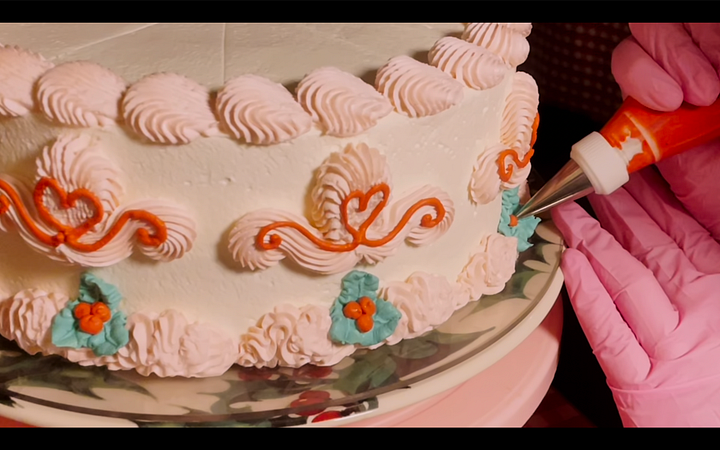
The sickest part of my bedtime routine is the hour-plus of screen time I need to fall asleep. The terrible sleeper that I am is prone to distressing episodes of hypnagogia — vivid hallucinations that wake me with a start, often within the first twenty minutes after turning out the lights. I shut my eyes only to be shocked awake by the sound of distant explosions or fireworks, voices calling my name, or sudden sense of freefall. If I open my eyes and try to get up slowly, it’s like the air in the room has turned to honey. Once, I nearly fell to the ground trying to reach a mass of television fuzz floating at the foot of my bed. At its least amusing, I tingle all over with hot pangs of anxiety bubbling up from my chest.
El entresueño1 traps me in the awkwardness of its grip as my brain struggles to transition from wakefulness to unconsciousness. I can’t just go from light to dark, I look for videos with a certain type of light. Come bedtime, I rely on buttercream ASMR, animated cartoons like “Moomin Valley” and shorts from the Czech Film Institute with the volume and brightness turned to a low buzz. I only want the light that filters through layers of reproduction, conversion, unstable connections and watermarks. I crave light and all her textures: grainy, fuzzy, hazy, shiny, staticky, stained, dusty, dim and golden.
When it comes to the texture of light, you have to see it to feel it. As Eve Kosofky Sedwick writes in the introduction of Touching Feeling: “Texture is not coextensive with any single sense.” Texture, she adds, citing Renu Bora, “tends to be liminally registered ‘on the border of properties of touch and vision’.” You can’t look at light without also feeling it. In fact, light can be felt from across the room, through screens, pages, and lenses thanks to the distance-compressing power of sight. One feels light in the words’ dual senses — as direct and indirect object; as a transitive and intransitive verb. And so, “a particular intimacy seems to subsist between textures and emotions.” The warmth of a soft glow feels comforting. The haze of a fuzzy television screen feels tense and confusing, just as a light leak in a photograph can feel both hot and nostalgic. In short, to pay attention to texture is to “also enter a conceptual realm that is not shaped by lack nor by commonsensical dualities of subject versus object or means versus ends.”2
I look for light that makes itself felt. I want to write about light as if it were a liquid substance that trickles down the skin of my eyelids and between the roots of my lashes as I put myself to sleep. Light that leaks, spills and oozes through cracks and across surfaces. Light that reminds me of some other cold air or damp room. Light I can touch with all my senses: the plastic sunlight of high noon; the frothy flood lights that beam against the forests around my house during blackouts; the soft flame of a birthday candle in a darkened kitchen; the spiky shadows under a Christmas tree; the rough grain of light in a memory.
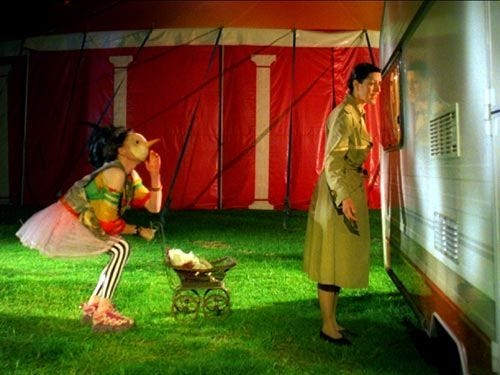
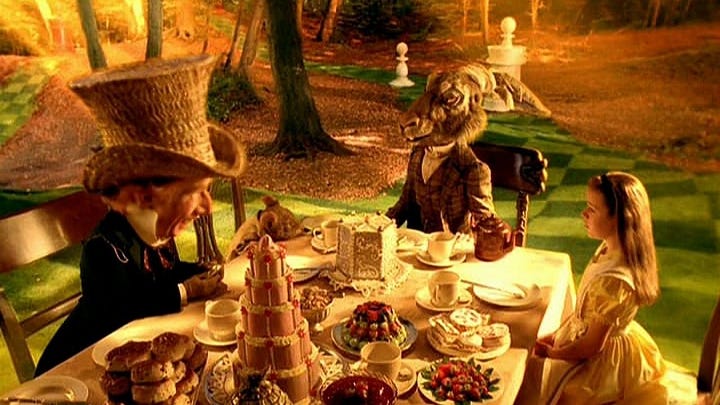
I hold in my brain, images and flashes of what I am mostly certain are movies I came across as a child. The kind of movie you know exists because you vividly remember watching it on TV, or so you think. Apart from that picture in your brain, you have no way of determining its source or even confirming its existence beyond your mind’s eye. On Reddit’s r/tipofmytongue, I have found answers to some of the most agitating images in need of a name: Like the one from that movie where children were trapped in slime balls and rolled out of an underground prison. And as I’ve worked to match these images to their sources and help flashes stabilize into memories, I’ve started thinking of them as examples of hypnagogic media: Movies, ads, videos or cartoons with visuals or premises so bizarre their imagery is impossible to forget yet difficult to place. They live halfway out of the darkness of memory; in the melancholy spotlight of something that is out of place.
Most instances of hypnagogic media come from the small universe of straight-to-video dark fantasy films intended for children like Return to Oz (1985), Mirror Mask (2005). The Last Mimzy (2007), and The Dust Factory (2004) — what people online mostly refer to as “fever dream movies.” There is an absurd wrongness to fever dream movies — they are often too dark and quirky for 21st century children’s entertainment, too artful and gritty for mainstream appeal. And yet, their surealness partially stems from their ridiculously stacked casts: Like 1999’s made-for-TV-movie, Alice in Wonderland, starring Whoopi Goldberg, Gene Wilder, Martin Short, Ben Kingsley, Miranda Richardson, Christopher Lloyd and Robbie Coltrane.3
But my concept of hypnagogic media expands the “fever dream movie” label to include all kinds of video: Eternal TV is a purveyor of hypnagogic media. Weirdcore, dreamcore, vaporwave and other nostalgia-based video art genres count as hypnagogic media. In the near future, we’ll look back on Jennifer Lopez’s This Is Me…Now: A Love Story (2024) as an example of this kind of confused and liminal media — not least for its cyberpunk dance numbers and all their absurd wrongness. Likewise, art house films like Alejandro Jodorowsky’s Santa Sangre (1989) or Tarsem Singh’s The Cell (2000), also starring JLo. In short, hypnagogic media is a confusion of genres, tastes, audiences, and statuses. But its truest forms are the near-forgotten made-for-TV-movie, the dark fantasy adventure genre, and the video ephemera stream.
Never fully emerging into their specific light, always half-obscured by the fuzz of memory, these fictional worlds bear the look of something shoved into the recess of its own weirdness. And I suspect this unease with floating, unidentified imagery drives our much-pathologized habit of curating micro-labels and niche internet aesthetics, such as weirdcore and dreamcore.4
Often used interchangeably, dreamcore and weirdcore deal in low-quality images of suburban landscapes, degraded interiors, and dated computer graphics to elicit feelings of confusion, alienation, disorientation, dread and nostalgia. As offshoots of the liminal spaces and The Backrooms internet cultures, weirdcore and dreamcore pay special attention to the hallmarks of late-90s childrens’ entertainment such as indoor amusement parks, movie theatres, malls and arcades. To fall down a weirdcore or dreamcore rabbit hole is to stare into a familiar darkness that loops back around into an eerily comforting embrace. As one commenter put it under a YouTube video, it’s a “comforting anxiety,” drawn from the “line between the aesthetic and the meme,” to borrow the words of another comment. It resists meaning by collapsing subject and object, video and viewer.
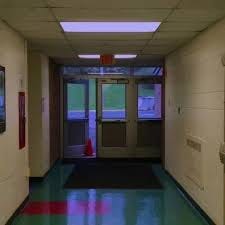
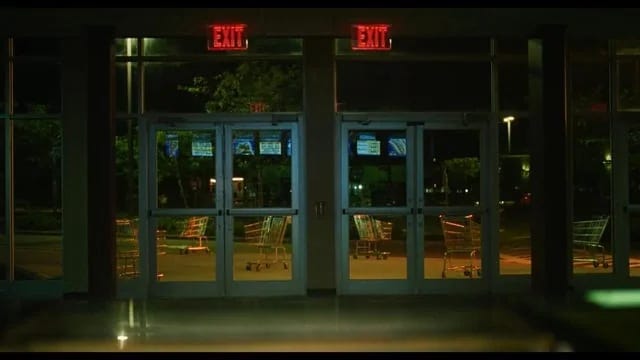
Set in the gloom of late-nineties suburbia, Jane Shoenbrun’s I Saw the TV Glow (2024) treats us to a buffet of weirdcore settings: an old-school movie theatre, Owen’s wood-paneled basement, and the FunCenter’s party room. All the places where Owen felt the pangs of his memories the strongest, places that double as sites of horrific non-remembering. On the first watch as on their rewatch, hypnagogic media like the films “Pink Opaque” flashes over our eyes as projections of another realm. The film’s protagonist, Owen, watches the show live on Saturday nights, asynchronously on pirated VHS tapes, and decades later on a streaming platform.
On the topic of postmodern video, Fredric Jameson writes that “video is unique… because its machinery uniquely dominates and depersonalizes subjects and object alike.” Video has the uncanny ability to recruit its source material and the viewer into its continuous image flow. To watch a video is to be inside of it and thus, according to Jameson, the spectator is “helpless” to the “total flow of the thing itself.” Critical distance dissolves and any effort to “describe, afterward, this stream of images” is to also “violate the perpetual present of the image and to reorganize the few fragments that remain in the memory according to schemes” or any version of the theme, Jameson continues, that “will probably reveal more about the reading mind than the thing itself.”5 Because you were in it you can’t speak of it from a distance. Once you’re out of the stream, all you have to work with are your memories’ own reconstruction of the video.
The “Pink Opaque” pulls Owen into a total flow, it collapses critical distance and bathes every room with its viscous glow. Owen is tested and tempted by this collapse. The show is a total flow of light, an image stream he returns to as much as he can until fear gets the better of him. In every other part of the film, we Owen through various vignettes of suburban darkness: like his school’s poorly lit hallways, where stark artificial light shines over the linoleum without relieving the far reaches of the halls of their oppressive darkness.
Bright light signals existential threat. Mister Melancholy’s face is the bright side of a moon, his cheeks crackling like television static, with its crunching, gnashing light, bright like a predator’s teeth. Incandescent flames are all that’s left of Maddy and her TV upon her disappearance, a flame Owen keeps lit in the forest ahead of his disappointing and final rewatch of the “Pink Opaque.” And when Owen finally splits his chest open in the movie’s climax, a television’s glow grows into a shining beam of light, reminding me of weirdcore’s signature orb — a floating beam of light that is understood to pose existential questions by merely existing.
Thus, the entire film is lit by varying sources of obscured and textured light: TV screens, aquariums, shaded lamps, candles, tents, and flickering street lamps. Sunlight is diffused by either overcast clouds, swaying branches or video grain. Light does not illuminate in the Elightening sense of the word, it merely glows, soft and tenuous. Within the opacity of Owen’s self-denial, ours is the view through the hairline fracture of a cracked egg.


In Tone, a book co-written by Sofia Samatar and Kate Zambreno, tone is described as “a shared light.” The writers thought of tone in terms of both sound and light. “Light is a thing, we wrote once, but lighting is a relationship.” Light feels and is felt on the skin and in the eye, like tone, light is shared among “quivering subjectivities in relation to others.” To me, light makes itself known in the moments I can only summarize by their sweet, dim light. Balmy and warm. Flickering and haunted. Soft and sleepy. As if I’d opened my eyes while still in the womb and fell in love with the first glimpse of light I saw: orange with layers of flesh, whooshing like the whites of a raw egg.
Samatar and Zambreno’s joint voice explains: “The stability of having a living parent who still lives in one’s childhood home is also extremely discomfiting, as to revisit the place is to to compete with an encroach on the instability and strangeness of memory. It seems urgent, to describe to the other, as best we are able, because we are not the type to write about architecture well, to describe this church that still stands, where we sent so much of our time as a child, and the list time we truly remembered attending was our mother’s funeral twenty years ago…” It seems urgent, to me as well, to describe to you all, as best as I am able, to describe this light before it fades, where I spent so much of my life as a child, where and how I learned to see-feel and feel-see.
Because I’m not the type to write about architecture well, I’ll describe the light: Of outdoor birthday parties that went on past sundown, and the huge white flood lights that cast funhouse shadows over the concrete walls. I think of neon and UV lights that were trendy during the late nineties for places like in-mall arcades and bowling alleys. The light from the skies in the “Rugrats,” which were never happy and blue, but always a shade of pink or purple. A shade of blush or periwinkle as if peeped through the narrow end of a birthday hat or from behind naptime blankets.
The skies of my tropical childhood were often too bright to look up to or too cloudy to stir up any interest. I spent my childhood in all kinds of amniotic spaces where the cool AC roared and toys, televisions and friends glowed in the shade. I remember drawing the sun as a filled-in triangle on the top right corner of all my drawings at school. The grass, always a row of dark green and the sky a stripe of light blue along the top. Everything else was white — like the buzzing daylight of a high-noon sun pounding down on the grass, the asphalt, the lizards and the flowers.But most importantly, I want to tell you about the barely-there light. The light from under the covers, the birthday candle emerging from the darkened kitchen. That light tastes the best.
In her 1979 short film, Asparagus Suzan Pitt’s protagonist deep-throats an asparagus stem that’s growing from the ground. It turns into a cascade of swirls and sparkles as she continues bobbing her head. We’ve been following this faceless woman since the beginning, when she sat on the toilet and shat out glowing asparagus stems. This same woman, who approached a lightbox staged with a miniature replica of the apartment she was standing in: She turns it on and streams of confetti light shine down on her miniature bedroom. In that miniature room, we zoom in on the same figure, who turns on an identical lamp to shine the same confetti-light into the identical miniature bedroom. And the images expand and repeat themselves like nesting dolls. This is the stream Jameson wrote about, this is the relation Samatar and Zambreno described; this is the looking-feeling/feeling-looking Eve Sedgwick mentioned; this why I need, no, I want to fall asleep to videos — it’s the flow, the intimacy, the collapse, the depersonalization I have come to know as sleep.
🔗: I might regret saying this but: Twitter/X is my favorite source for finding (questionably) free-to-watch films, starting with @rarefilm / rarefilm.com — Also on Twitter/X, The Nomad Film Society for African cinema — A must-watch YouTube playlist of crucial and hard-to-find political films from Palestine, Syria + Lebanon — The Palestine Film Index compiles 500+ videos and films and free ways to watch them (along with supplemental texts) — for animation lovers, the Zagreb Film: The Art of Animation shares high-quality Croatian and Eastern European animation — As for ephemera, this website lets you watch videos people uploaded to YouTube with their default file names; grainy and tender tributes to the mundanity of the home video — Lastly, my favorite Kathy Kelleher essays on the colors of light and shadows, from Bastard Amber to Lamp Black. 📺
Spanish, for the intermediate state between sleep and wakefulness characterized by a distinct loss of lucidity and clarity. I don’t know of any equivalent in English.
Eve Kosofsky Sedgwick, Touching Feeling: Affect, Pedagogy, Performativity. 2003. pp. 13-22.
A behind the scenes documentary is free to watch on YouTube.
Places like the Times are still, in 2024, publishing articles with headlines like "Why Gen Z loves a label." For thoughtful and intelligent insights on the topic, I'd suggest this paper instead.
Fredric Jameson, Post-Modernism or, the Cultural Logic of Late Capitalism.1991. pp. 76-79.




J Lo: hypnagogic icon?
wanna be substack friends :-)